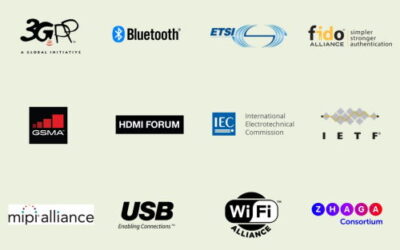Practical Guides

Guide for fair and efficient voting in meetings of an industry alliance
Learn how to make the most common voting procedures work. Simple yes/no voting. Voting on a series of options. Voting on a range of numbers.

Guide to facilitate multi-party negotiations between companies
Learn how to create an industry alliance. How to bring companies to the negotiation table. How to prepare. How to organize efficient negotiation of a legal text. Common pitfalls to avoid.

Guide to chairing an industry alliance meeting
Learn how how to help a group of engineers to find the best technical solutions, without wasting time on endless debate. Learn when to stop the debate and start voting.

Guide to choosing the name and logo for a group of cooperating companies
Learn how to find good names and how to design good logos. What is a good logo? The advantage of using a meaningless name. The risk of basing logos on letters and words.
Our Services

Alliance Management
Some technologies can only be marketed successfully when competitors cooperate to make their products compatible. We create and manage organizations that develop standardized interfaces between products.

Intellectual Property Licensing
We develop license programs that create optimal conditions for adopting standards and technology. The right IPR policy and license program is key to the success of startup businesses and standards development organizations.

Multi-Party Negotiations
We make it easier to negotiate contracts between multiple companies by acting as neutral facilitator. That is particularly useful when some of the participants are competitors.
Our Latest Publications
Comparing the bylaws of standards organizations
Comparison of the rules that govern 12 standards organizations: 3GPP, Bluetooth SIG, ETSI, FIDO Alliance, GSMA, HDMI Forum, IEC, IETF, MIPI, USB IF, Wi-Fi Alliance, and Zhaga.
How to justify participation in standards development
Participating in standards development is expensive. The justification depends on the company’s products. Is that product a consumer product, or a component, or a technology license? The benefits and costs are different. Justification is particularly difficult for startups.
RAND royalty rate setting – leave it to the market?
Market forces can determine RAND royalty rates for standard essential patents such that (a) the standard is rapidly adopted, (b) royalty rates are accepted by the majority of users without need for litigation, and (c) royalty rates are transparent and non-discriminatory.



